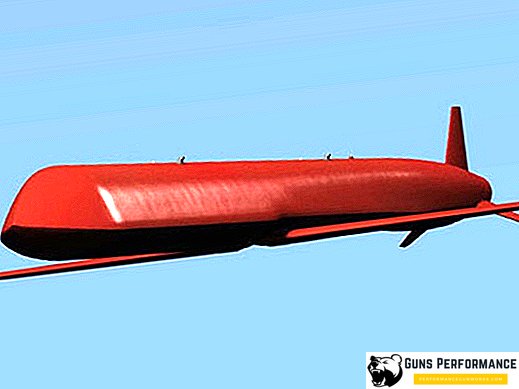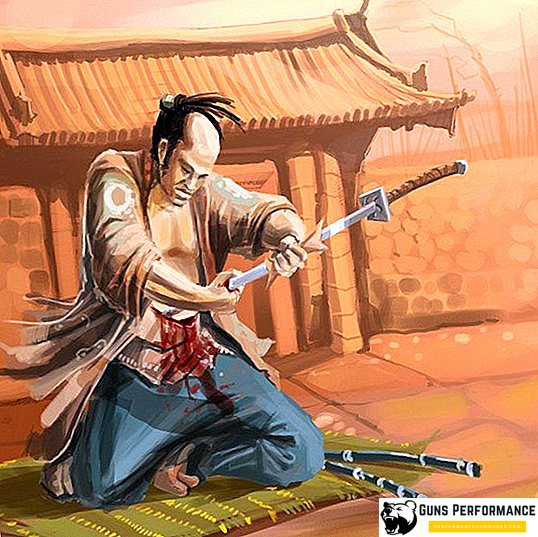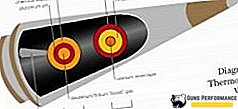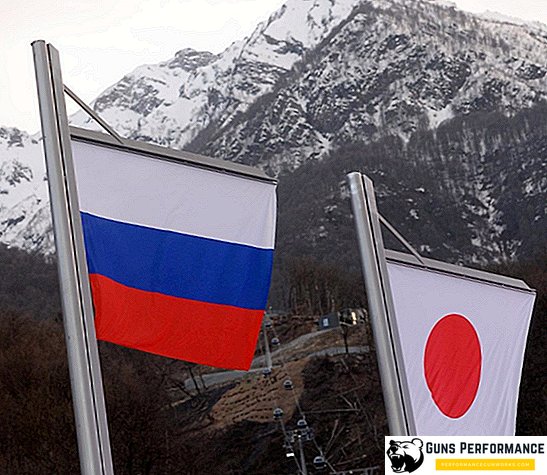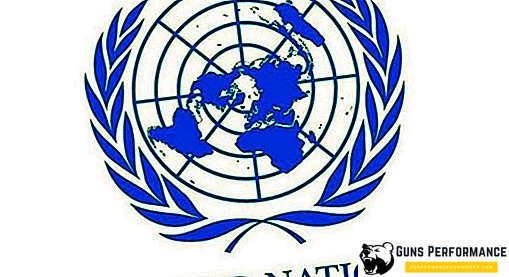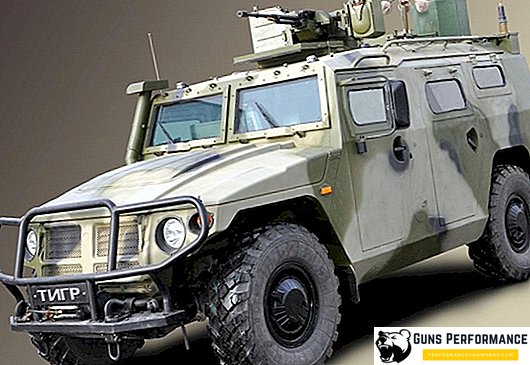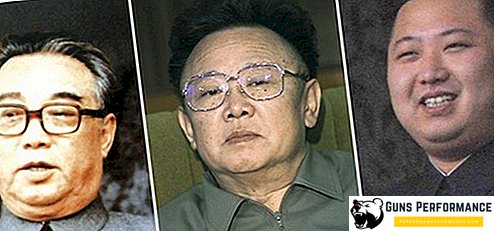The Republic of Lebanon is located on the shores of the Mediterranean Sea between Israel and Syria. It is an Arab country, but even there it is distinguished by an abundance of various religious communities or denominations. State power here has its own characteristics, since it has to reckon with the division of its citizens into different, often hostile, communities. In 1975, a civil war broke out in the country, which lasted until 1990. As a result, Lebanon from the richest state of the Arab world has become a backward country with an undeveloped economy. Currently, the presidency of Lebanon is Michel Aoun.
The history of the formation of Lebanon from ancient times to the French Mandate
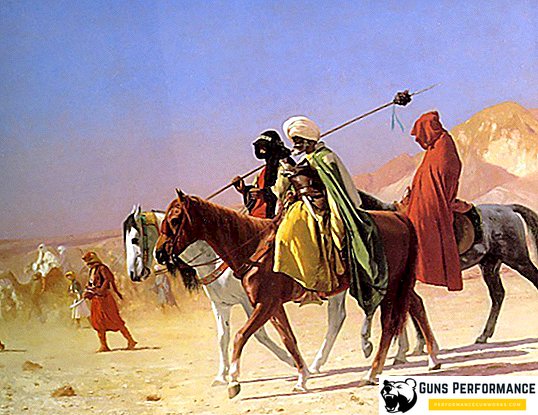
The territories of modern Lebanon from ancient times attracted the rulers of various nations. Studying the history of the country, one can see that the local peoples seized the following peoples:
- Assyrians;
- Persians;
- Greeks;
- Romans;
- Turks;
- Arabs;
- French people.
All these peoples pursued well-defined goals and objectives: the seizure of the territories of Lebanon gave access to the Mediterranean Sea, so the ancient Phoenicians, who inhabited these lands from early times, have always been considered skilled seafarers and successful traders. Lebanon itself played the role of a shopping center for the entire region, since it was here that residents of the eastern and western parts of the oikumen sold their goods.
Do not disdain the locals and piracy, and in the ancient world, they were considered one of the most bloodthirsty robbers. It was from the ancient Phoenicians that the Greeks learned trade and navigation. Local cities developed freely and grew rich until about the 7th century BC:
- The most ancient counting systems were invented and improved;
- The advanced trading system of the time was developed;
- A marine navigation system has evolved;
- Architecture developed and flourished, especially of the temple type.
In VII BC, the territories of Lebanon were captured by the Assyrians. They besieged the trading cities with a huge tribute and placed their henchmen in all major government posts. Local nobility constantly raised people to revolts and uprisings, but the Assyrian rulers suppressed them with incredible cruelty. Gradually, trade fell into decay, as taxes destroyed all profits. Over the next centuries, Lebanon remained under the rule of foreign invaders:
- After the weakening of the Assyrian kingdom, a short period of independence came, but soon Babylon and Persia seized power in the region;
- In the III century BC, the country was conquered by the troops of Alexander of Macedon;
- In the II century BC, the rulers of Egypt and Syria came to power;
- After that, the ancient Romans came to power in the region.
The Phoenician trading elite easily adapted to the needs of the invading state, strengthening its influence in various colonies on the islands of the Mediterranean Sea. At all the key sites, which were located along the trade routes, settlements arose where Phoenician culture was spread. In the 1st-3rd centuries of our era, Christianity began to spread in the territories of modern Lebanon. This religion was especially popular in cities that later became part of the Eastern Roman Empire:
- Sidon;
- Tyr;
- Beirut.
These cities grew rich and flourished until the Eastern Roman Empire was conquered.
Arab conquests of Lebanon
Since the VII century, there have been major changes in the region. There were conquerors from the Arab Caliphate, who gradually began to win power. The territory of Lebanon until the XII century remained under the rule of Muslim ruling houses:
- From 660 to 750, the Umayyads ruled;
- The Abbasids ruled the lands of present-day Lebanon from the eighth to the ninth centuries;
- Tulunids ruled in the 9th century;
- In the tenth century, Ihshidids ruled;
- The Shiite Fatimid state ruled Lebanon in the 10th-12th centuries.
All Muslim rulers tried to turn their subjects into fervent Muslims with decrees and orders, which is why armed uprisings often broke out in Lebanese territories.
Starting from the 12th century, European knights of the crusaders appeared in the region. The ruling dynasties of Europe, which the Catholic Church provoked, began a large-scale campaign to conquer the Middle East, hiding behind the good intentions of liberating the Holy Sepulcher. After a series of crusades, much of the Lebanese lands fell under the influence of the Crusaders. Particularly happy were the arrival of Europeans of the Maronite community, who soon concluded a union with Rome and recognized the primacy of the Pope of Rome.
In the XII-XV centuries, the territories of modern Lebanon, Syria and Palestine fell under the rule of the Mamluk rulers. Those had to constantly deal with external and internal problems in these regions. Under external problems, we should understand the constant campaigns of the crusaders, and internal - armed uprisings of Shiites and Druze, the largest of which occurred in 1308.
After the fall of Constantinople, Europe established strong trade relations with the Mamluks, and the city of Beirut became the center of trade between east and west for several decades. In 1697, the Lebanese Emirate came under the authority of the Shehab dynasty. Those gradually expanded their influence to the north, after which they were able to subjugate even the mountainous regions of Lebanon. Interestingly, over time, the Shehab dynasty adopted Christianity, and all its representatives became Maronites.
Beginning in 1842, Mountain Lebanon decided to divide into two parts:
- Northern region, where power belonged to Christians;
- The southern region where the Druze ruled. In this part of Mountain Lebanon, the majority of the population were also Christians.
All these sections have further strengthened the opposition of various religious groups, which constantly developed into armed clashes. In addition, the liberation movement, whose goal was to liberate the Ottoman Empire, was gaining momentum in the country.
The Turkish authorities, in turn, in every way prevented Lebanon’s secession from the Ottoman Empire:
- Uprisings were brutally suppressed;
- Army obstructed food supplies;
- Many rebel leaders were executed, accusing them of anti-government activities.
In memory of the victims of the Ottoman authorities in Lebanon, there is now a national holiday called the Day of the Fallen.
French Mandate and Lebanon’s Independence

The Ottoman Empire lost the First World War, and the territories of Lebanon fell into the zone of interests of France, which had views of these lands since the days of the Crusades. General Gourault, commander of the 4th French Army, announced that a new republic would be created, which would copy France in its structure. In 1920, the mandate of the League of Nations to manage Lebanon was received. Until 1926, the country was called Great Lebanon, and all the reforms of the French rulers of the country were aimed at enrichment.
In 1926, the Constitution was adopted, according to which Lebanon became the Lebanese Republic. The first President of Lebanon received the status of Charles Dabbas, who was an Orthodox Christian. After him, the head of state was visited by representatives of various religious groups, ranging from Sunni Muslims to Maronite Christian Christians. The duties of the president were more symbolic, as France actively intervened in state policy, changing the election results in its favor and stopping the Constitution when it interfered with their interests in the region.
In 1943 a new government was elected in the country, which actively supported the abolition of the French mandate. This was in the interests of Britain and the United States in this region, so the Lebanese nationalists managed to get rid of the power of the French. In 1943, the National Pact was signed, according to which the French mandate was terminated unilaterally. Foreign troops were in Lebanon until 1946.
From 1943 to 1952, Bishara el-Khoury was the country's leader. He received all the power that formerly belonged to the French commissars. Now the presidential orders received the force of legislation. During the reign of al-Khoury, Lebanon received a powerful economic push, and the state began to grow richer rapidly. Unfortunately, during the first Arab-Israeli war of 1947-1949, a flood of refugees poured into the territory of the republic, which undermined the country's economy. All this led to an economic crisis. In 1952, the people of Lebanon began holding mass demonstrations throughout the country, as the Khuri government was suspected of corruption. The president could not resolve the situation and was forced to resign.
In 1952, Camille Chamoun came to power. He ruled the state until 1958. During his rule in Lebanon, the following reforms were carried out:
- Introduced a direct vote;
- Women were given voting rights;
- Foreign investment in the country's economy was attracted;
- Developed banking sector;
- The port and airport in Beirut were expanded, the seaport in Tripoli was laid;
- A quota has been received for the Armenian community in parliament.
In 1958, President Chamoud attempted to change the Constitution in order to remain in power for a second term. This led to outrage from the population, and uprisings began to erupt in all parts of the country. As a result, the rebels were able to capture a quarter of the territories of Lebanon. To normalize the situation in the country, the president invited US troops who arrived there according to the Eisenhower doctrine. This did not help Chamoud, and in 1958 he resigned.
From 1958 to 1964, General Fuad Shehab was in power. Immediately after taking office, he achieved the complete withdrawal of American troops from the country. During the reign of the new president, the country was able to achieve a high level of economic growth. It was Lebanon that became the mediator between the oil tycoons of the East and the states of the West. Shebab pursued a policy of non-intervention and was able to achieve excellent relations with a number of European countries.
From 1964 to 1970, the country was ruled by Charles Helu, who ruled the country just like the previous president. During his reign, the 1967 Arab-Israeli war occurred, which ruined Lebanon’s relations with Europe, as the government openly condemned Israel’s actions. Demonstrations against Israel, which were not dispersed by the Libyan government, were massively held throughout the country.
From 1970 to 1976 in the country of the rules of Suleiman Frangieu. He had strong support among the country's military elite. During his time in power, the main political parties in Lebanon began to create armed groups. All this was the beginning of the revolutionary movement, as armed clashes were constantly occurring between the various parties.
Civil War of 1975-1990

Beginning in 1975, a series of riots occurred in Lebanon, which led to a complete decline of the economy. The Arab countries held a summit in 1976, at which it was decided that Damascus would bring its military contingent to Libya. This was supposed to separate the warring parties and provide the conditions necessary for the termination of the civil war in the country.
As the power in Lebanon weakened, many Muslim ethnic groups in Lebanon decided to return the country to "true Islam", which, in their opinion, should immediately end a protracted civil war. Israel, taking advantage of the weakness of the Lebanese authorities, hastened to occupy the southern regions of the country, and Syria, in turn, tried to dislodge the Israelis from the country. The local population suffered the most from this, especially the Christians who were robbed by both local Muslims and Syrian troops.
In 1991, Syria and Lebanon signed a treaty, after which the civil war was officially ended. During the fighting as Lebanese presidency, the following politicians visited:
- Ilyas Sarkis (reign from 1976 to 1982);
- Amin Gemayel was president from 1982 to 1988;
- Michel Aung ruled the country from 1988 to 1989. He was appointed prime minister and, in the absence of the president, performed his functions;
- Rene Moabad was head of state for only 17 days. Killed in a car explosion;
- Ilyas Hraoui was president from 1989 to 1998. He was not elected for a second term in a row, but simply amended the Constitution, thanks to which he extended his powers for 3 years.
Khroui is a very ambiguous figure. On the one hand, he managed to end the long-term civil war in Lebanon, on the other hand, he was accused of making the country a de facto colony of Syria.
Presidents of Lebanon in the postwar period

In 1998, General Emile Lahoud came to power in the country. He ruled the country until 2007. His election was due to the intervention of Syria, which had a great influence on the government of Lebanon. The role of Lahoud in fomenting war with Israel cannot be underestimated. He constantly stated that the war was not over, and until the Israelis returned all the prisoners of war and the occupied territories, the peace treaty could not be signed.
In 2008, the former commander of the Lebanese army, Michel Suleiman, was elected president. He was able to resolve the political crisis that erupted after the resignation of Emil Lahoud. By his main duty, the president saw the settlement of all military conflicts in the region. After Michel Suleiman, Michel Aoun, who was already the de facto head of state in 1988-1989, became president. The inauguration of the new president was in 2018, and he still remains in this post.
Constitutional foundations and features of the executive in Lebanon

The Constitution of Lebanon was adopted in 1926, when the country was ruled by France, which ruled it under a special mandate issued by the League of Nations. It is for this reason that the main document of the Lebanese Republic practically copies the French Constitution of the times of the Third Republic. It has been repeatedly amended, which stipulated some nuances concerning the president and parliament of the country. The Constitution guarantees its citizens the following rights:
- The right to private property;
- Liberal economic system;
- Freedom of personality, which is not only guaranteed, but also protected;
- The state acts as a guarantor for all religious communities located in Lebanon that their rights and obligations will be respected and protected;
- The residence of the citizens of Lebanon is inviolable.
In addition, the Constitution guarantees freedom of the press and the formation of various unions, which is not found in all countries of the Middle East.
Executive power in the Republic of Lebanon is vested in the Council of Ministers. The head of government is the elected chairman of the Council of Ministers. The President of the Republic is a symbol of the unity of Lebanon and the head of state. The paradox is that the armed forces of Lebanon are subject to the Council of Ministers, and the head of state is the Supreme Commander of the armed forces.
The president is elected for a term of 6 years, while re-election as head of state is possible no earlier than 6 years after the end of his term in the first term. The election of the head of state is held by the National Assembly. The main duties of the President of Lebanon are to exercise the following powers:
- He must promulgate all laws that will be approved by the National Assembly. After that, the head of state should ensure the publication of the law;
- All international negotiations should be carried out by the president, he is obliged to ratify them after the approval of the Council of Ministers. If treaties are extremely important for a country, then parliament must approve them;
- The head of government is approved by the president, who is obliged to consult with the chairman of the National Assembly.
All acts of the head of state must be signed by the chairman of the government and the minister, who is responsible for a specific area.
Features of the functioning of political parties in Lebanon

Since Lebanon was under Muslim rule for a long time, and then it was ruled by France, this greatly influenced local political institutions:
- Separation into ethnic and religious groups;
- Millet system;
- The influence of religious leaders on the political situation in the region.
При этом каждая группировка может отстаивать свои интересы с оружием в руках, что и привело в своё время к пятнадцатилетней революции, начавшейся в 1975 году.
Начиная с периода мусульманского владычества, политическая система Ливана не имела возможности развиваться самобытно, так как завоеватели жёстко контролировали деятельность различных этнических и религиозных группировок. Французская модель государственного строя была налажена в стране без какой-либо подготовки и адаптации для местных условий. Единственным шагом в сторону было условие выбора президента, премьер-министра и председателя Национальной Ассамблеи из разных религиозных групп. Даже сейчас в политике Ливанской Республики заметно влияние военных формирований, нестабильность и трайбализм.
Резиденцией главы Ливана является дворец Баабда, расположенный в одноимённом городе. Раньше там находилась приёмная президента, но в результате сирийских бомбардировок, он был сильно повреждён. В настоящее время дворец Баабда восстановлен и открыт для посещений.


